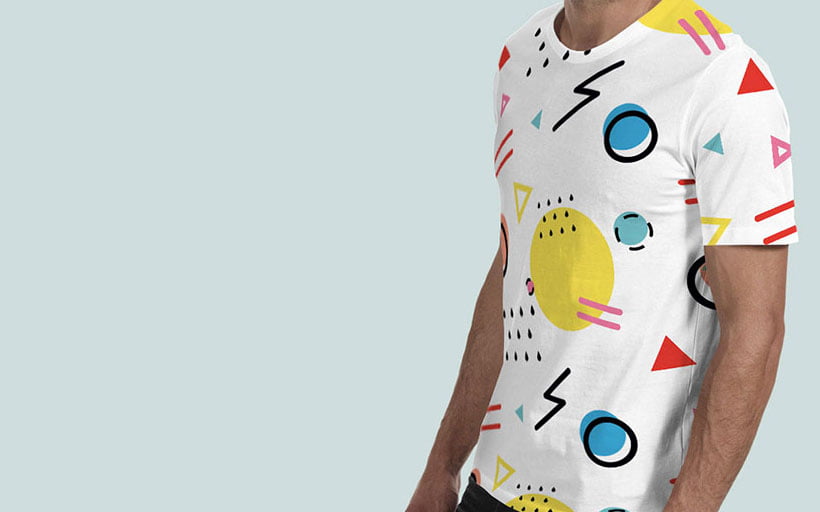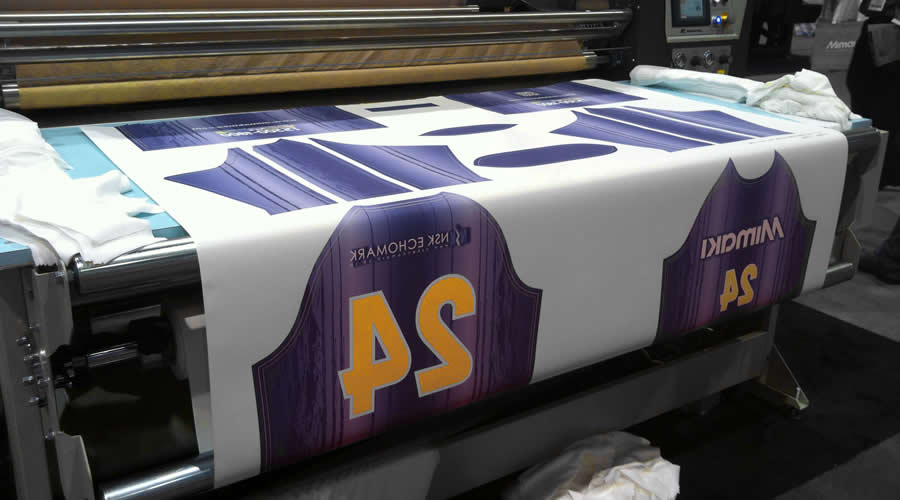Screen Printing Strategies: Understanding the Art for Branded Clothing
A Comprehensive Guide to the Various Kinds Of Towel Printing Techniques
Beginning on an exploration of fabric printing strategies reveals an interesting intersection of custom and innovation. Each technique, from the thorough craftsmanship of block printing to the fast performance of screen printing, serves one-of-a-kind purposes and provides distinctive benefits. Digital printing's versatility and ecological awareness stand in stark contrast to the speedy customization of warm transfer printing. Color sublimation printing captivates with its capability to create vivid, enduring styles on artificial textiles. To truly comprehend the subtleties and potential applications of these diverse strategies, a much deeper investigation is vital.
Block Printing
Block Printing, among the earliest techniques of fabric design, has a rich history that dates back to ancient worlds. Coming from China around 220 A.D., this method later spread to India and eventually Europe. The process involves carving elaborate designs into wooden blocks, which are then dipped in color and pressed onto fabric to create patterns. This approach is remarkable for its capacity to create very outlined and repeated designs.
The accuracy and craftsmanship associated with block printing make it a labor-intensive procedure, however it also permits a high level of customization. Craftsmens can produce unique patterns by incorporating different blocks or differing the application of dye. This flexibility has actually contributed to the long-lasting popularity of block printing in both contemporary and typical textile layout.
Block printing is especially valued for its aesthetic high qualities, including the slight variants in pattern and color that arise from the hand-printing process. These flaws lend a distinct personality to each item, distinguishing it from mass-produced materials. Despite breakthroughs in modern printing modern technologies, block printing stays a valued method, commemorated for its historical importance and imaginative value.
Screen Printing
Display printing, another famous fabric decoration method, has actually revolutionized the market with its effectiveness and versatility. This technique entails developing a stencil, called a display, and utilizing it to apply layers of ink on the printing surface. Each color in the layout requires a separate display, which allows for elaborate and vivid multi-colored prints.

Among the key advantages of screen printing is its adaptability to different sorts of materials, consisting of cotton, polyester, and blends. This strategy is particularly suitable for large-volume orders because of its cost-effectiveness and speed. The longevity of the prints is an additional significant benefit, as the ink bonds well with the fabric, guaranteeing resilient styles that stand up to numerous cleans.
As soon as dried out, the design is transferred onto the emulsion-coated screen utilizing a UV light resource. Ink is after that pushed via the stencil onto the fabric making use of a squeegee.
Display printing is widely used in the fashion business, promotional items, and custom-made apparel. Its capacity for high-grade, comprehensive prints secures its standing as a foundation technique in fabric printing.
Digital Printing
Digital printing has promptly arised as an innovative technique in the fabric industry, leveraging innovative innovation to produce high-resolution layouts straight onto fabric. Unlike standard methods, digital printing utilizes inkjet printers to down payment pigment or dye-based inks onto fabrics, allowing vivid and detailed patterns with an exceptional level visit here of detail and shade accuracy.
Among the key advantages of electronic printing is its flexibility. This technique allows for on-demand printing, which substantially lowers waste and reduces supply costs. Furthermore, it sustains short runs and custom-made layouts, making it suitable for custom projects and limited-edition collections. The removal of screens and other arrangement requirements even more improves performance, decreasing production time and labor prices.
Additionally, electronic printing is environmentally friendly. DTF printing. It utilizes water-based inks and needs much less water and power contrasted to standard strategies, aligning with sustainable practices. The precision of digital printing also permits the use of a larger variety of materials, including cotton, silk, polyester, and blends, guaranteeing adaptability across different applications
Warm Transfer Printing
Just how does warmth transfer printing reinvent material design? This method has actually brought considerable improvements by enabling vivid and complex styles to be transferred onto a selection of materials with amazing accuracy. Warm transfer printing includes using heat and stress to transfer a design from a particularly developed paper onto fabric. This procedure begins with publishing the preferred image onto transfer paper utilizing specialized inks. Once the photo is published, the paper is placed onto the material and subjected to a warmth press, which transfers the ink from the paper to the textile.
Among the primary benefits of heat transfer printing is its capability to generate top notch, comprehensive photos rapidly and successfully. It is especially fit for small manufacturing runs and personalized orders, making it a prominent selection for customized garments and marketing things. Additionally, this method is functional, accommodating different kinds of fabrics including cotton, polyester, and blends.
Additionally, warmth transfer printing is relatively economical contrasted to other techniques, as it needs marginal setup and lower preliminary financial investment - sublimation printing. This price, coupled with its capacity for creating lively, sturdy prints, underscores its critical function in contemporary material layout

Dye Sublimation Printing
Dye sublimation printing, a sophisticated fabric printing method, supplies unmatched vibrancy and longevity for designs on various artificial materials. This technique involves transforming strong dye into a gas without passing with a liquid state, permitting the dye to penetrate the material seamlessly. The process begins with publishing the design onto a special transfer paper making use of sublimation inks. The published transfer paper is after that positioned on the fabric, and both are subjected to high warmth and stress utilizing a heat press. The heat triggers the dye to sublimate and bond with the textile fibers, developing a long-term, high-resolution print that withstands fading and breaking.
One of the vital advantages of dye sublimation printing is its capacity to produce continuous-tone prints with vivid colors and complex details. Unlike various other printing methods, the dye ends up being part of the fabric instead than sitting on top of it, resulting in a soft and breathable coating.
Conclusion
Block printing is respected for its artisanal top quality, while screen printing is helpful for high-volume manufacturing. Digital printing provides versatility and environmental benefits, whereas warmth transfer printing is ideal visit the website for rapid customization.
Each approach, from the thorough workmanship of block printing to the quick performance look what i found of display printing, serves distinct purposes and offers distinct advantages. Digital printing's flexibility and ecological consciousness stand in stark comparison to the speedy personalization of warm transfer printing. Despite advances in modern-day printing modern technologies, block printing remains a cherished strategy, celebrated for its historical value and imaginative value.
Dye sublimation printing, a sophisticated textile printing method, provides unmatched vibrancy and long life for styles on various artificial materials. Digital printing provides convenience and ecological benefits, whereas warmth transfer printing is suitable for rapid modification.